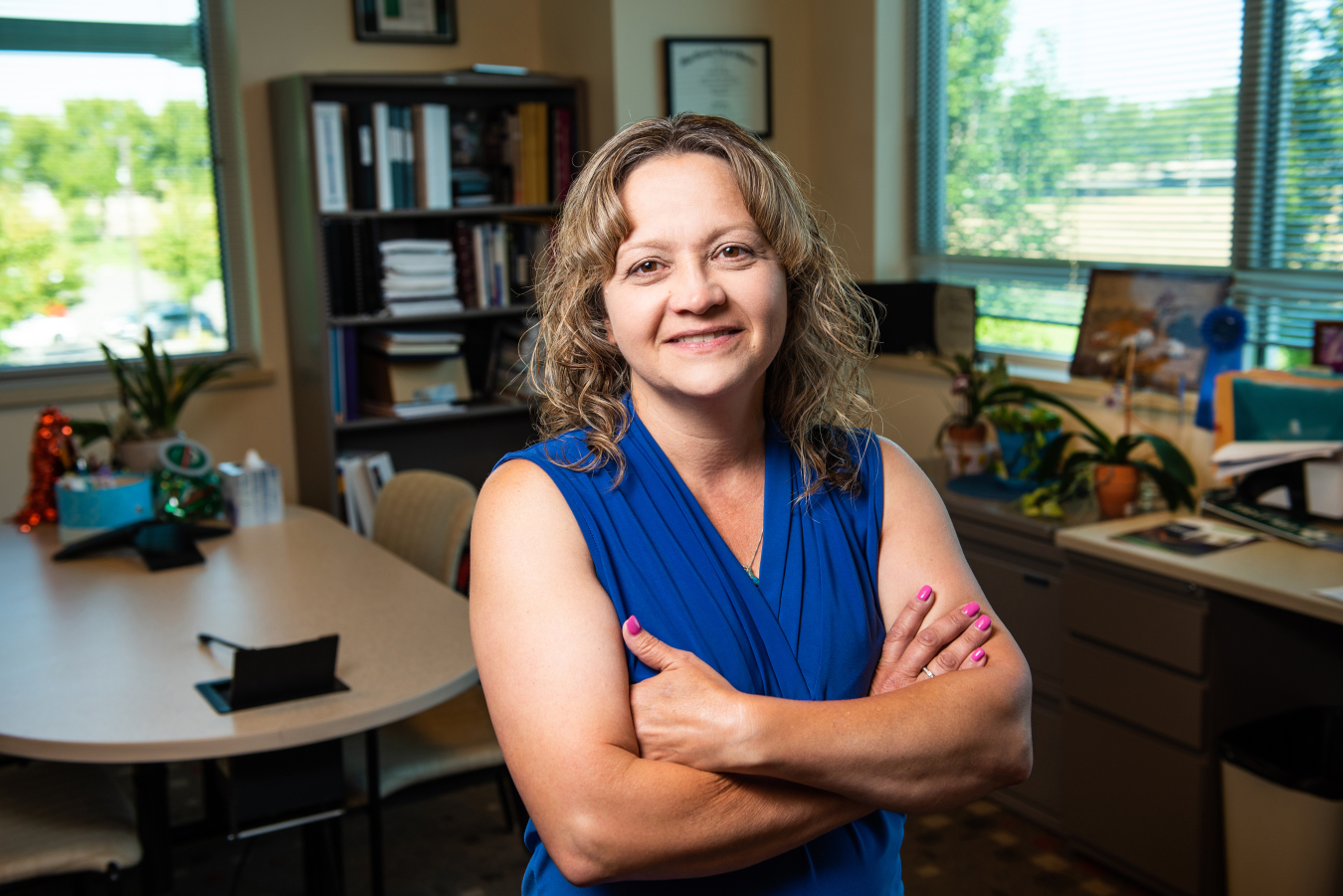Learn why Dr. Katrina Waters loves her job as a division director for Biological Sciences at the Pacific Northwest National Laboratory.
December 2, 2019
As division director for Biological Sciences at the Pacific Northwest National Laboratory, Dr. Katrina Waters divides her time between setting polices that help other scientists be more successful and her own research in environmental health and infectious diseases. Her work includes exploring how environmental chemicals affect longtime human health and understanding how the human body responds to seasonal infections like the flu and lethal infections like Ebola or avian flu. Katrina also holds a joint faculty position at Oregon State University. She earned a Ph.D. in biochemistry from the University of Wisconsin and an A.B. in chemistry from Ripon College.
What inspired you to work in STEM?
When I was in high school, I had a physics teacher with an advanced degree who made the principles of science relatable to high school students. This was before science personalities like Bill Nye, so I hadn’t thought of science like that before. It was revolutionary when he floated cans of soda in a fish tank to demonstrate that liquids have different densities, swung a bike tire from the ceiling to demonstrate centrifugal force, and used compressed air tanks to propel a wheeled cart down the hall to demonstrate potential energy. He challenged us to think about why things happen and taught us to ask questions that scientific principles can answer about real-life things. I’d always been good at math and had parents who encouraged me to go to college, but this introduced me to science as a discipline and a path to go beyond college.
What excites you about your work at the Energy Department?
The greatest thing about working at a national lab is being able to work with a group of scientists from so many diverse backgrounds. I’m not restricted to my own skills and talents, and I can think bigger about what I can accomplish because I can draw on the expertise of so many. It’s not possible to do these huge, cross cutting projects by myself, but our teams allow us to do things no one else can do—there’s really no limit.
How can our country engage more women, girls, and other underrepresented groups in STEM?
Often, people aren’t aware of the types of careers there are in STEM. I grew up on a farm, so I never thought about career doing scientific research--I didn’t know this type of job existed. And it’s not just me. When I talk to local students, half of them don’t know there’s a national lab in our city. To help more people engage, we need to create opportunities for awareness and then encourage people to push beyond the bubble of their communities to embrace those opportunities.
Do you have tips you'd recommend for someone looking to enter your field of work?
Don’t let yourself be intimidated. One of my greatest accomplishments here at the lab was when a high school junior came as an intern. He was timid, but smart and he wasn’t sure what he wanted to do, so I paired him up with bioengineer, who challenged him to build a bioreactor. There was a lot to learn in terms of programming and instruments, so he was overwhelmed at first. But with encouragement from his mentor and the circle of scientists around him, he embraced the challenge, and he did it. Seeing that ability to build something with his own two hands got him so excited that in college, he enrolled in a bioengineering program. Now he comes back every summer.
It’s our responsibility as leaders to create opportunities to help young people see what they can do. There’s a freedom to working at a national laboratory that allows resourceful and self-motivated people to thrive. Science here isn’t worksheets and being sent to a desk. As we give people opportunities to explore in science, they realize the freedom to really make something of themselves.
When you have free time, what are your hobbies?
I volunteer with Boy Scouts to be with my three teenage boys. I also like to go camping.
Learn more about our programs & resources for women and girls in STEM at http://www.energy.gov/women

